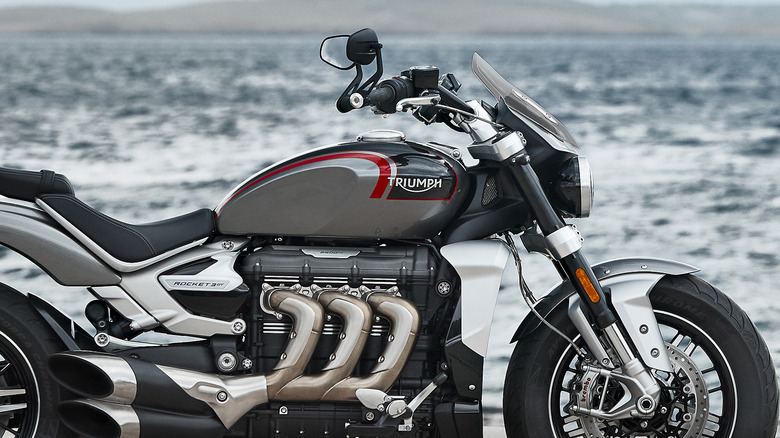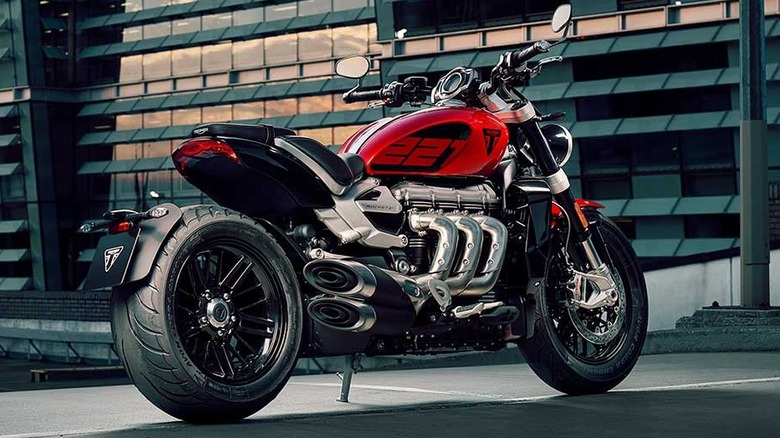Here's What Makes The Triumph Rocket 3 Engine So Special
Any discussion of Triumph's latest Rocket 3 R or Rocket 3 GT motorcycles is bound to gravitate immediately to the bikes' massive three-cylinder engine. Although certain sportbikes are able to best the Rocket 3's 165 horsepower, none can come close to its stump-pulling 163 pound-feet of torque. That impressive torque figure is courtesy of the age-old strategy of large displacement — 2,458 cubic centimeters (150 cubic inches), to be exact. For those keeping track, that's the largest production motorcycle engine ever.
To put that into perspective, each of the Rocket 3's three cylinders is almost 820 cubic centimeters, which dwarfs many entire four-cylinder motorcycle engines like the popular 600 cc and 750 cc classes. The cylinder bore of 4.33 inches is larger than a Dodge Hellcat V8's.
Three-cylinder engines are an incredibly important piece of Triumph's history and identity, dating back to its first three-cylinder, the 1968 Triumph Trident. In the early 2000s, Triumph and other manufacturers were in a bit of friendly competition over whose cruiser motorcycle would have the largest engine. In spite of being limited to three cylinders by heritage, Triumph claimed ultimate victory in 2005 with its 2,294-cubic-centimeter Rocket III, since surpassed by the Rocket 3. Note the change from Roman numerals to Arabic, meant to signify the modern updates engineered into the new bike, which debuted for the 2020 model year.
Big cubic inches = big acceleration
Remarkably, the Rocket 3 motor weighs 40 pounds less than its predecessor in spite of being larger, courtesy of a newly revised crankcase. Engine aside, the two Rocket 3 models also received a host of new features including fly-by-wire throttle, selectable drive modes, cruise control, keyless ignition, and revised traction control. One characteristic which didn't change between the old Rocket III and the new Rocket 3 is the longitudinal placement of the engine, necessitated by size. That is, the three cylinders are aligned front to rear rather than perpendicular to the bikes' frames like you'll find with Triumph's smaller Triples.
So how fast is the bike that's wrapped around the world's largest motorcycle engine? Zero to 60 mph happens in just 2.73 seconds, which puts the Rocket 3 R in the company of the very fastest sportbikes. Quite the feat considering the Rocket 3 R's decidedly un-sportbike-like nearly 700-pound curb weight.
If you're interested in buying some bragging rights of your own, the Rocket 3 is available in two versions: the R (roadster) starts at $23,895, and the more comfortable touring-oriented GT starts at $24,595. Chromed-out special editions of both bikes are also available for a small upcharge, as is a racy version called the "221." If you're wondering, 221 represents the engine's torque output measured in the United Kingdom's preferred format: newton-meters.

